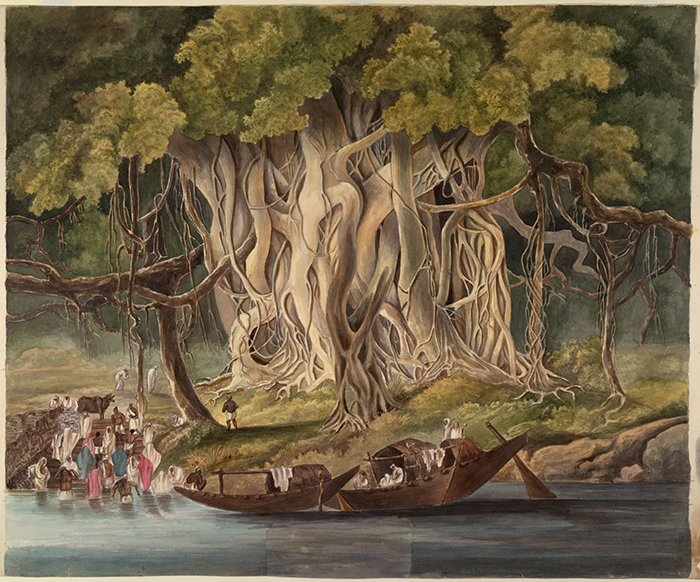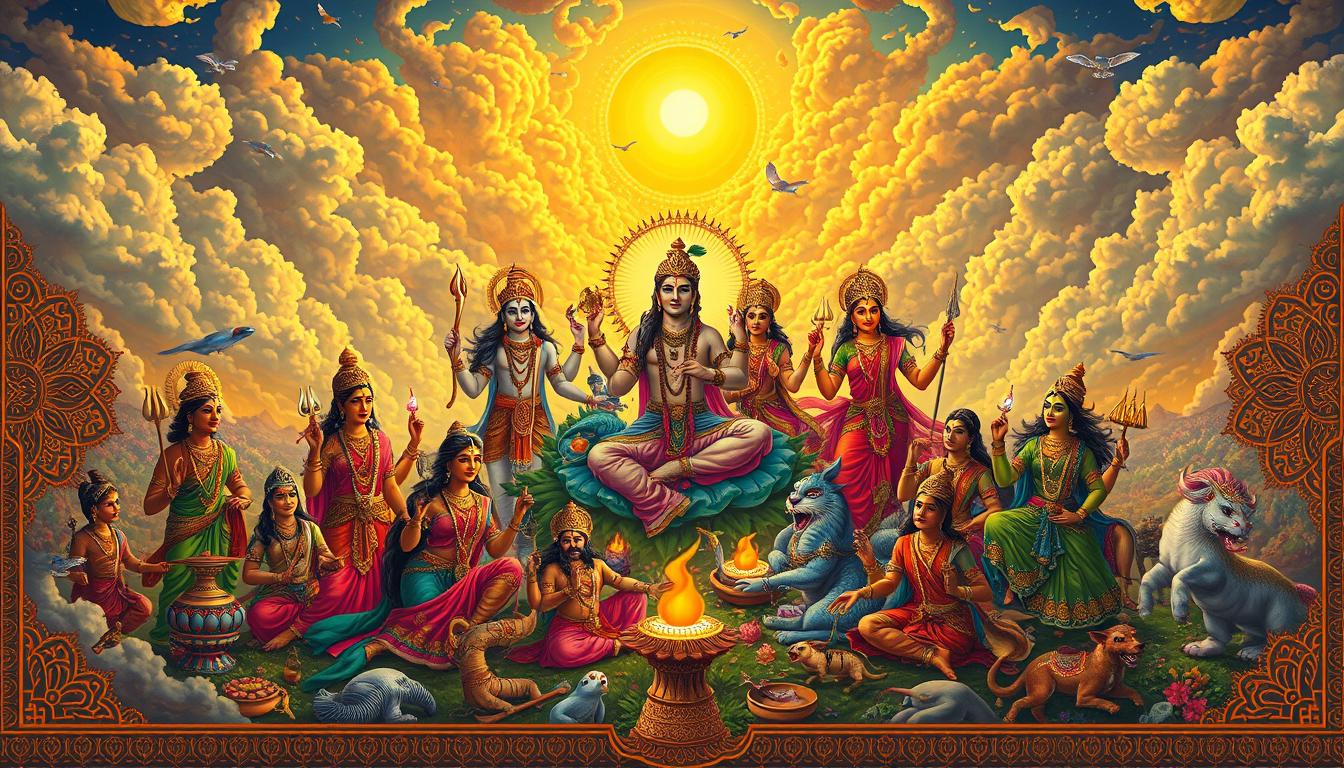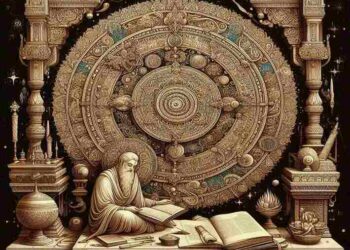Table of Contents
ToggleIntroduction
Uncovering Indian Mythologys Literary Richness With its extensive pantheon of gods, goddesses, heroes, and epic stories, Indian mythology has had a significant influence on the subcontinent’s literary culture as well as its religious and cultural life. Indian mythology, which has its roots in the ancient Vedic, Puranic, Mahabharata, Ramayana, and folk traditions, provides a wealth of tales, characters, and symbolism that continue to influence authors, poets, and artists all over the world.
These stories become potent storytelling devices that examine the human experience—our hardships, goals, virtues, and vices—beyond their religious and spiritual settings.
Indian mythology has had a significant impact on both classical and contemporary literature. India’s mythical heritage has influenced both religious scriptures and literary genres, from the intricate stories of the Mahabharata to the beautiful verses of the Vedas.
Drawing from these ancient mythology, epic poetry, plays, novels, and short stories provide distinctive perspectives on subjects like karma, love, sacrifice, duty (dharma), and the essence of good and evil. Because they explore fundamental facets of the human psyche and pose queries regarding identity, morality, and the divine, these tales are ageless.
For writers, filmmakers, and artists working today, Indian mythology remains a major source of inspiration. These ancient myths have been examined and reinterpreted for a contemporary audience by authors such as R. K. Narayan, Shashi Tharoor, Amish Tripathi, and Devdutt Pattanaik, who have given these ancient tales new significance.
Indian mythology is an essential component of the literary canon in the twenty-first century because of the accessibility of these myths, which are frequently interpreted via the prism of popular culture.
1. The Roots of Indian Mythology: The Epics and Sacred Texts
Indian mythology finds its earliest and most comprehensive expression in the Vedas, the Upanishads, the Ramayana, and the Mahabharata. These ancient texts, some of which date back over 3,000 years, form the backbone of Indian mythology and provide the mythic framework that has inspired countless generations of storytellers.
Read more
1 The Vedas and Upanishads: The Vedas are a collection of hymns, rituals, and philosophical treatises that are the earliest known scriptures of Indian civilization. While they focus primarily on cosmology, rituals, and the divine, they lay the groundwork for the themes that would later develop in Indian mythology. The Upanishads, philosophical texts that explore the nature of reality, the self (atman), and the universe (brahman), provide a more abstract and metaphysical layer to the mythological tradition, influencing later mythic literature by emphasizing the relationship between the human and the divine.
2 The Ramayana: Composed by the sage Valmiki, the Ramayana is one of the two great Sanskrit epics of India. It tells the story of Prince Rama’s journey to rescue his wife, Sita, from the demon king Ravana. This narrative not only details the heroic deeds of its protagonist but also delves deeply into questions of dharma (duty), loyalty, and the complexities of human relationships. The Ramayana’s structure and themes have influenced numerous adaptations and retellings across cultures, including in literature, theatre, and dance.
3 The Mahabharata: The Mahabharata, attributed to the sage Vyasa, is the longest epic in world literature. At its core, it recounts the conflict between two families—the Pandavas and the Kauravas—culminating in the great battle of Kurukshetra. The Mahabharata explores a range of philosophical and moral issues, particularly through the Bhagavad Gita, which is a dialogue between Prince Arjuna and the god Krishna. Themes of duty, justice, fate, and the role of the divine in human affairs permeate the epic, making it one of the most profound works in world literature.
These epics, with their intricate plots, vivid characters, and moral dilemmas, are more than just stories—they are repositories of cultural values, philosophical ideas, and spiritual wisdom. Their impact on Indian literature cannot be overstated, as they form the foundation for much of the mythology and storytelling that followed.

2. The Role of Indian Mythology in Classical Literature
Indian mythology has had a profound influence on classical literature in India, particularly in the form of poetry, drama, and narrative traditions. Many classical works of literature were either inspired by or directly adapted from mythological themes and stories.
1 Sanskrit Plays and Dramas: Classical Sanskrit literature, particularly plays written by renowned playwrights like Kalidasa, Bhasa, and Shudraka, frequently drew upon mythological themes. Kalidasa’s Shakuntala, for instance, is based on a story from the Mahabharata and tells the tale of a young woman’s encounter with a king, the consequences of their union, and the role of fate and divine intervention in their lives. The play’s exploration of love, separation, and reconciliation reflects the influence of mythology’s treatment of destiny and human agency.
2 Bhakti Poetry: The Bhakti movement, which emerged around the 7th century CE, introduced a new wave of devotional poetry focused on personal devotion to the divine, often centered around gods like Vishnu, Shiva, and Devi. Poets such as Kabir, Mirabai, and Tulsidas reinterpreted mythological themes in their works, bringing the divine closer to the human experience. Tulsidas’s Ramcharitmanas, a devotional retelling of the Ramayana, is a prime example of how mythological stories could be adapted to express intense personal devotion and spirituality.
3 Jataka Tales and Folk Literature: Indian folklore and the Jataka Tales—stories of the Buddha’s past lives—are also steeped in mythology. These stories, which often carry moral lessons and teachings about kindness, patience, and the importance of virtue, have been passed down through generations in oral traditions, plays, and folk literature. Many of these tales feature gods, goddesses, and divine beings who interact with humans, often guiding them toward enlightenment or testing their moral resolve.
In classical Indian literature, mythology is not simply a tool for storytelling but a means of grappling with larger existential questions and moral dilemmas. The incorporation of gods and mythological figures into these works allows authors to explore themes that transcend the mundane, engaging with issues of fate, duty, and the nature of existence.
3. Indian Mythology in Modern Literature
The influence of Indian mythology continues to be felt in modern Indian literature, where it is often reinterpreted to reflect contemporary issues, conflicts, and values. In recent decades, there has been a surge in mythological retellings and reinterpretations, as authors have sought to bring ancient stories to life for a new generation of readers.
1 Amish Tripathi’s Shiva Trilogy: One of the most successful modern adaptations of Indian mythology is Amish Tripathi’s Shiva Trilogy, which reimagines the story of Lord Shiva as a historical figure rather than a deity. The trilogy blends mythology with fantasy and historical fiction, making the characters of the Hindu pantheon more relatable and human. Tripathi’s work has become hugely popular, particularly among younger readers, and it has sparked a broader trend of retelling ancient myths in contemporary settings.
2 Devdutt Pattanaik’s Jaya and My Gita: Devdutt Pattanaik is another author who has brought Indian mythology into the modern literary fold. In Jaya, he retells the story of the Mahabharata from a more accessible and modern perspective, highlighting the epic’s relevance to contemporary life. In My Gita, Pattanaik offers a personal interpretation of the Bhagavad Gita, blending philosophical reflection with practical advice. His works have become widely popular as they make ancient texts more approachable and relatable to a modern audience.
3 Chitra Banerjee Divakaruni’s The Palace of Illusions: In The Palace of Illusions, Divakaruni offers a feminist retelling of the Mahabharata, focusing on the character of Panchaali (Draupadi), the wife of the five Pandavas. The novel reimagines the epic from a female perspective, exploring themes of power, gender, and identity. Through this lens, Indian mythology becomes a powerful tool for questioning traditional gender roles and social norms.
4 Shashi Tharoor’s The Elephant King: Tharoor’s works often engage with both history and mythology. In The Elephant King, Tharoor blends the mythological with the political, reflecting on themes of destiny, power, and identity. His novels often look at the intersection of myth, history, and contemporary politics, offering insights into the way myths shape national identity.
These modern interpretations of Indian mythology do more than simply retell ancient stories—they breathe new life into them, making them relevant to modern readers while maintaining their rich symbolic and philosophical underpinnings. By reimagining mythological tales through contemporary lenses, these authors engage with universal themes of human existence, providing fresh insights into age-old dilemmas.
4. The Symbolism and Themes of Indian Mythology in Literature
Indian mythology is rich with symbolism and themes that continue to resonate in literature today. The characters and stories from the Vedas, Ramayana, Mahabharata, and Puranas are not merely products of their time but continue to reflect the complexities of the human psyche and condition.
1 Dharma (Duty) and Karma (Action): One of the central themes of Indian mythology is the idea of dharma (moral duty) and karma (the consequences of one’s actions). These concepts have been explored in works such as the Mahabharata and the Bhagavad Gita, where characters wrestle with questions of right and wrong, duty to family and society, and the nature of selfless action. Writers today continue to explore these themes in contemporary settings, reflecting the moral dilemmas that we face in our personal and collective lives.
2 The Dualities of Good and Evil: Indian mythology is replete with stories of gods and demons, light and darkness, good and evil. These dualities are explored through the conflicts between divine beings like Vishnu and Shiva and their antagonists, such as Ravana and the demon king Mahishasura. The struggle between good and evil in Indian mythology often emphasizes the complexity of these forces, suggesting that neither is entirely pure or entirely evil. Contemporary writers continue to explore this duality, showing that good and evil exist not just in external conflicts but within individuals as well.
Read more
3 The Divine and the Human: Many myths in Indian literature explore the relationship between the human and the divine, where gods take human forms to interact with mortals or where humans transcend their limitations through devotion or mystical insight. These themes continue to inspire contemporary writers, who often draw upon the symbolic relationship between the divine and human to explore questions of identity, spirituality, and existential purpose.

Conclusion
Indian mythology is still a strong and influential impact in world literature. From the ancient epics of the Ramayana and Mahabharata to more recent retellings by authors like Amish Tripathi and Chitra Banerjee Divakaruni, the themes and stories of Indian mythology continue to offer important insights into the human condition. The moral dilemmas, intellectual questions, and deep symbolism these stories convey make them just as relevant today as they were thousands of years ago.
As we move into a more globalized world, the richness of Indian mythology is a wonderful tool for exploring the universal issues that unite us all: love, responsibility, identity, good and evil, and the search for purpose in a complex and often chaotic world. By recreating these ancient tales from modern viewpoints, authors continue to ensure that Indian mythology is a powerful and important literary force that inspires readers and writers of the future.
Read more
FAQ
1. Why is Indian mythology important in literature?
Indian mythology provides rich narratives and timeless themes that delve into the complexities of human existence. It offers profound insights into concepts like duty (dharma), action (karma), and the nature of good and evil. These stories continue to inspire writers, poets, and artists across the world, shaping both classical and modern literary traditions.
2. How has Indian mythology influenced modern writers?
Modern writers often reinterpret and reimagine traditional myths, bringing them into contemporary settings or offering new perspectives. Authors like Amish Tripathi, Devdutt Pattanaik, and Chitra Banerjee Divakaruni have all drawn on Indian mythology to create novels that engage with current issues while staying grounded in ancient themes and symbolism.
3. What are some key themes in Indian mythology?
Key themes in Indian mythology include the concept of dharma (moral duty), karma (the consequences of one’s actions), the dualities of good and evil, the human-divine relationship, and the search for truth and enlightenment. These themes have remained relevant in literature throughout history and continue to resonate with modern readers.
4. How does Indian mythology compare to other world mythologies?
Indian mythology shares certain commonalities with other world mythologies, such as a focus on gods and divine beings, moral dilemmas, and the exploration of human nature. However, Indian mythology is unique in its incorporation of philosophical concepts like dharma and karma, as well as its deep integration with spirituality and cosmology.
5. What makes Indian mythology relevant in today’s world?
Indian mythology continues to resonate today because its themes are universal—concerned with love, morality, identity, and the human experience. Contemporary retellings and adaptations highlight the ongoing relevance of these ancient stories, making them accessible and meaningful in the context of modern life.
Read more
















